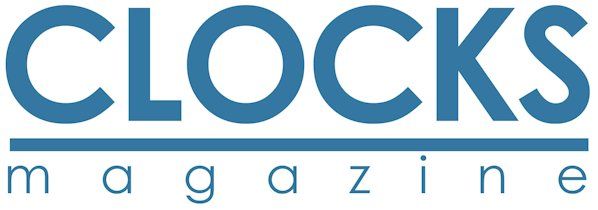Marvellous world
Fellow clockmakers, I have only recently realised that we are wasting a great deal of time in repairing clocks and watches - and probably not charging enough as we do so. Let me explain.
First of all quantum physics has revealed a marvellous world to us where widely separated particles are linked and display simultaneous actions when they are apparently out of touch with each other. A world where particles are labeled 'strange', 'up-quarks', 'down-quarks', 'easy bits' (the last are a postulation of my own for particles that may be moved easily this way and that, rather like moving the debris of a good meal in order to demonstrate the unique manner in which you adjusted that bargain 400-day clock with the plastic pieces). And where by 'weak measurement' you can tell exactly where something is and what size it is - without actually measuring it. This world and the equally strange one of pharmaceutical laboratory statistics may usefully be harnessed to our trade.
It is an old tag that a clock or watch that is not going is correct twice a day. Laughable but - there is more to it than that. Consider; how accurately does a customer need to know the time in normal conditions? Would plus or minus 15 minutes be fair? This gives us a 'utility window' of 30 minutes in 12 hours - regularly (and it is clear that regularity is a prime necessity in horology).
However let us apply the statistics of the pharmaceutical laboratory (I said I would, you'll remember). The average person only needs to know the time at widely spaced intervals and under special circumstances, after a good lunch it is totally unnecessary for at least three hours unless there is an appointment to keep - and appointments have their own special world of time and space (we might discuss this another time). We have immediately eliminated 25percent of the 12 hours as being quite unnecessary. Suppose that we have four or five times of the day when our physical presence is deemed important to, let us say, an accountant, bank manager, one's spouse. Take four as a definitive quantity. Directly we have arrived it ceases to be important what the time is for at least another hour - you might double that for one's spouse. Here we have another five hours when we really have no need to know the time - a running total of eight hours. Do you take a nap in the afternoon - when talking to representatives for instance? The total is now nine hours and we are ignoring those times when we know the time instinctively and with complete accuracy - the coffee breaks. Add two more hours.
Our utility window of 30 minutes only needs to be applied for about one hour in 12 (I won't pretend to absolute accuracy in these calculations). On those occasions when we need to know the time to our specified tolerance we have a 50 per cent probability of being correct.
Now, consider the cold cure, no-one would dream of taking it for a bunion, or a broken finger - in fact for ninety nine per cent of the occasions on which you could take it, it would clearly not be appropriate and so the laboratories are perfectly justified in taking test results that originally showed one per cent effectiveness and applying them to the known needs of the customers. One per cent effective, ninety nine per cent of the time totally unnecessary - in fact inappropriate - produces the desirable justification for claiming one per cent in one percent (remainder only, I don't deal in higher mathematics) or almost 100 per cent relief. Why choke on the 'almost'? Advertising can make excellent use of '99% effective!'
Horology could leap ahead in the field of customer satisfaction if this matter were explained properly, possibly a leaflet on the counter would help?
Laurie Penman, USA
|

